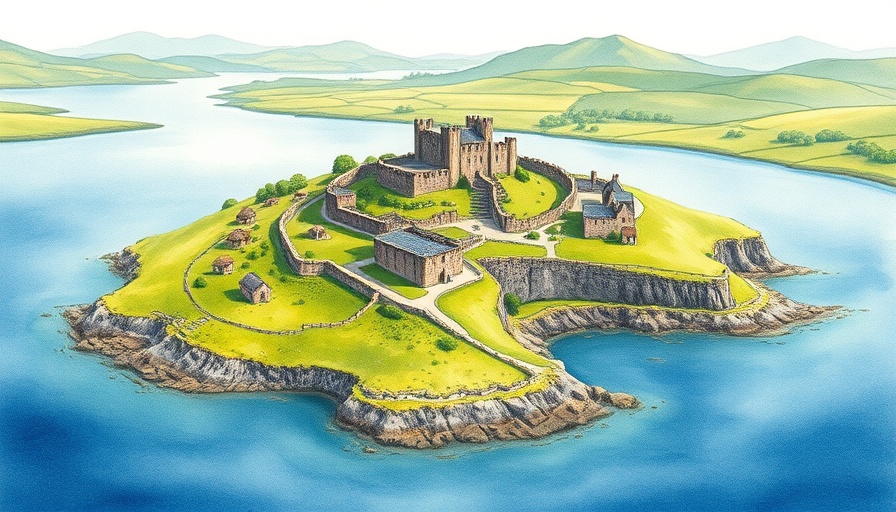
Unveiling Scotland's Forgotten Kingdom
The newly uncovered site at Finlaggan, Islay, reveals that for nearly three centuries, this scenic locale served as a powerful seat for the Lords of the Isles, a quasi-independent lordship exercising authority comparable to that of the Scottish and English crowns. The findings of Dr. David Caldwell expose a rich tapestry woven from history, power, and culture that had long been concealed beneath the surface.
The Rich Legacy of the Lords of the Isles
The Lords of the Isles, descended from a notable 12th-century figure named Somerled, established an empire that spanned the Inner and Outer Hebrides as well as parts of mainland Scotland. Their designation as "Ri Innse Gall" or "King of the Isles" signified not just a title but a distinct identity that set them apart from the traditional Scottish monarchy. These lords maintained immense power, leading troops of up to 6,000 warriors, asserting their place within historical narratives often dominated by their Scottish counterparts.
A Unique Political Statement
The castle structure itself, featuring a stone tower akin to those found within Anglo-French fortifications, serves as a striking emblem of this power. As Caldwell elucidates, construction methods and architecture at Finlaggan mirrored those used by reigning nobles of the time, transforming it into a political statement rather than merely a defensive fortress.
A Treasure Trove of Archaeological Insights
After decades of archaeological exploration, the remains revealed a complex that included not just a castle but also functioning kitchens, chapels, workshops, and communal spaces. This rich assemblage details the life of the rulers and their subjects, illustrating a sophisticated societal structure that blended authority with daily living in the medieval period.
The Path Forward: Connecting with History
Understanding the implications of these archaeological discoveries invites entrepreneurs, small business owners, and professionals alike to reflect on our own leadership dynamics today. Just as the Lords of the Isles exercised significant influence in their realm, modern leaders must recognize the societal connections they cultivate within their communities. Lessons from history, such as the importance of community integration and the forging of connections, can inspire effective business practices.
Why This Matters Today
Finlaggan’s narrative resonates with the modern audience, particularly in the realms of networking and collaboration. As history shows the significance of community leadership among the Isles’ lords, it highlights the value of fostering strong connections and mutual support in our enterprises today. Entrepreneurs can draw inspiration from this framework as they build and sustain their ventures amidst evolving challenges.
 Add Row
Add Row  Add
Add 




Write A Comment